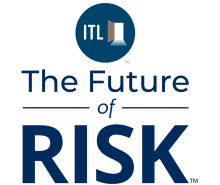As natural perils intensify and become more unpredictable, the imperative to accurately assess, price, and mitigate risk has never been more critical. While catastrophe modeling has long been our industry's bedrock, the sheer volume of unstructured, real-time data presents both a formidable challenge and an immense opportunity. Large language models (LLMs) are poised to unlock this potential, fundamentally reshaping our approach to risk management.
The Unified Risk Picture
The true power of the LLM revolution lies not in isolated capabilities but in their synergy. Consider a widespread, sudden event, such as the 2013 Eastern Canada ice storm or a large-scale power outage in a major European city. Traditionally, assessing the full impact involves sifting through disparate sources post-event. With LLMs, initial signals—from real-time social media chatter, emergency service dispatches, and local news reports—can trigger immediate, cascading actions. The system can instantly identify affected properties, cross-reference policies for specific peril clauses (e.g., wind or ice damage), and flag potential exposures. This shifts us from a reactive, post-event data collation process to a dynamic, pre-emptive risk mapping system.
This unified view offers profound value to underwriters globally. Imagine an alert during the 2021 British Columbia atmospheric river event, or a significant flood in Central Europe. An LLM-powered system could not only identify affected properties but also pinpoint those within a portfolio with a high probability of claims based on a newly identified overland water coverage trigger. It could even enrich property data with nuanced details like "a heritage brick house, built in the 1920s, with a newly reinforced basement, surrounded by mature trees in a high-wind zone"—all extracted from unstructured notes, historical records, or public descriptions. This unified risk picture transcends traditional modeling; it becomes a living, breathing digital twin of our entire exposure, continuously updating as events unfold and new data emerges.
Going Beyond Assessment
This continuous stream of hyper-accurate data ushers in a new era of risk management. Instead of merely assessing losses after they happen, insurers can begin to mitigate them before they become catastrophic. The same LLM-driven system calculating real-time exposure could send targeted alerts to policyholders in the path of a disaster, such as the 2016 Fort McMurray wildfire or large-scale blazes in Australia or California. These alerts could offer tailored advice on securing properties before evacuation, moving beyond generic warnings to actionable, personalized guidance.
This fundamentally changes the insurer's role from a financial backstop to a genuine risk partner. It moves beyond simple risk pricing to genuine risk prevention. For agricultural clients, the system might not just assess hail risk but also provide hyper-local weather alerts combined with tailored advice on securing specific crops or equipment. This shift to pre-loss mitigation is not just about reducing claims; it's about building a more resilient society, one informed decision at a time. The strategic value of unstructured data in enhancing resilience, as highlighted by extensive research in risk management and supply chain logistics, underscores this imperative.
Challenges and the Human Imperative
Of course, this transformative vision is not without its challenges. The most significant is trust. An LLM's ability to extract nuanced insights from complex data is only as good as its underlying training and validation. In a highly regulated industry, we cannot afford for models to "hallucinate" or misinterpret critical policy clauses. The ethical implications are equally immense. The use of public and social media data, for instance, must be handled with extreme care to protect privacy and security, adhering to evolving global data protection regulations like GDPR and Canada's privacy laws.
Academic and industry literature consistently emphasize the necessity of a "human-in-the-loop" model. The future of this technology isn't about replacing human experts but augmenting them. Actuaries, underwriters, and claims adjusters will remain essential, but their roles will evolve. Instead of manually sifting through vast datasets, they will become critical thinkers and validators, leveraging LLM-generated insights to make faster, more precise, and more strategic decisions. This human oversight is the crucial final check, ensuring that while machines process the deluge of data, human expertise guides the way forward, maintaining fairness, explainability, and equitable outcomes.
A Phased Approach to Adoption
Given the transformative potential and the identified challenges, our recommendation for executive leadership is to pursue a phased, strategic adoption of LLM technology. This is not a "big bang" project but a continuous evolution, built on measured steps and clear governance.
1. Phase 1: Pilot and Validation. Initiate small, focused pilot programs to test LLMs on specific, well-defined problems. A strong starting point could be using LLMs to parse and extract key data points from a limited set of complex policy documents or to analyze drone footage from a past significant event (e.g., a regional flood or wildfire) to improve preliminary damage assessment protocols. This phase is critical for proving the concept, building internal trust, and demonstrating tangible ROI.
2. Phase 2: Integration. Once pilot successes are validated, focus on integrating LLM capabilities into existing systems. This involves building robust bridges to connect unstructured data insights from LLMs with the structured data in our core catastrophe models, policy administration systems, and claims platforms. The goal is seamless data flow and enhanced decision support.
3. Phase 3: Scale and Governance. As the technology scales across the enterprise, establish comprehensive governance frameworks. This is a non-negotiable step to ensure data integrity, address potential biases, and maintain strict compliance with all relevant regulatory standards globally. A dedicated, cross-functional team—comprising legal, compliance, IT, and business leaders—will be essential to guide this process, ensuring responsible and ethical deployment.
By taking this measured and strategic approach, we can harness the immense power of LLMs to move from a reactive to a truly proactive model of risk management. This will not only strengthen our organizational foundations but also enable us to provide greater stability, security, and peace of mind to our policyholders worldwide, solidifying our role as essential pillars of societal resilience in an increasingly uncertain future.







